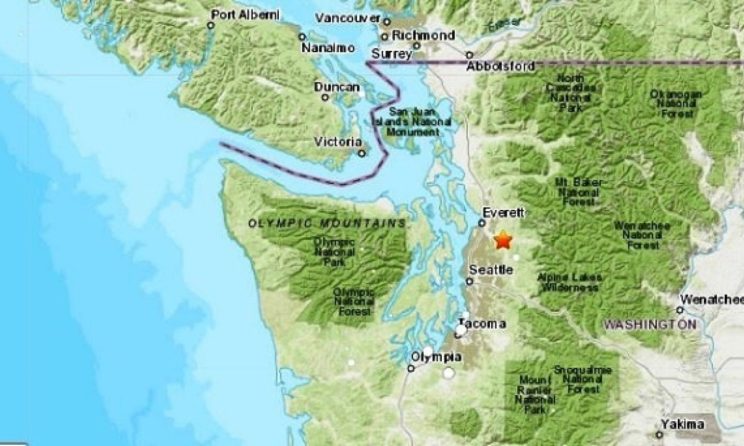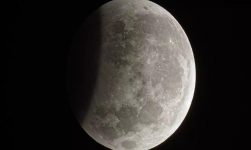
Early Friday morning, two earthquakes shuddered the Puget Sound region in Washington state. These temblors were felt into British Columbia as well as across the Cascade Mountains into the eastern part of the state.
Though these two quakes were strong but there were no immediate reports of damage or injuries. According to the U.S. Geological Survey (USGS) reports a 4.6 magnitude earthquake distressed the Three Lakes area, nearly 40 miles northeast of Seattle.
These earthquakes were followed minutes later by a 3.5 magnitude after effects close to the city of Monroe, which is around 30 miles northeast of Seattle. The early shock was recorded on Friday at 2:51 am.
A 4.6-magnitude quake is comparatively non-threatening, but it arises just a few days after a 7.1 magnitude quake struck Southern California, which was the worst quake in 20 years in the region.
A surveillance video which was obtained by KIRO-TV showed the moment when the earthquake hit Everett, Washington.
There were a lot of viewers who reported feeling the earthquake. “We were sound asleep and the whole house shook and we all woke up. We are spooked and still awake,” Rob Fuhriman told the station.
KIRO meteorologist Nick Allard also stated in one of the statements that the earthquake was the biggest to hit the region since the M6.8 Nisqually earthquake on 28th February 2001 that struck east of Olympia.
Seattle is nearby to Mount St. Helens, Mount Baker, Glacier Peak as well as Mount Rainier, these are four of the U.S.’s utmost active volcanoes. As per to the USGS, earthquakes can raise the risk of the volcanic eruption in the region.
According to the state Department of Transportation who stated earlier that the agency would be reviewing bridges, but till now there had no reports of damages. The USGS also said in their statement that it received some of the reports of people feeling the shaking from Vancouver to nearby Wenatchee, Washington.
The Northwest area of the region is most particularly prone to earthquakes. The most recent strong earthquake that shook the Seattle area was happened in the year 2001, when a 6.8 magnitude quake occurred just north of Olympia, Washington. That quake was too strong and powerful that it has caused some major injuries as well as widespread damages, which also comprises the air traffic control tower at Sea-Tac Airport.
Moving further to the south along the Pacific coast, on Friday morning a magnitude 4.9 aftershock of last week’s Southern California tremors was felt extensively in the region. There have been thousands of aftershocks of the 6.4 magnitude earthquake on July 4 as well as the 7.1 quakes that happened the following day.
David Caruso, who is a USGS geophysicist, told The Seattle Times the Washington state earthquake was because of a thrust fault, in which one side of a fault pushed upward relative to its reverse side. Such kind of earthquakes is very common in the Cascade Mountain range.
Caruso also further said that the Northwest quake had no link to the recent earthquakes in California. Right now the situation is under control and there have been no such reports of injuries or damages.






